Lactobacillus plantarum CUL66 and Cholesterol Study
Lactobacillus plantarum CUL66 can impact cholesterol homeostasis in Caco-2 enterocytes
SUMMARY
Hypercholesterolemia drives the development of cardiovascular disease, the leading cause of mortality in western society, and supplementation with probiotics that interfere with cholesterol metabolism may provide a contribution to disease prevention. Lactobacillus plantarum CUL66 (NCIMB 30280) has been assessed in vitro for its ability to impact cholesterol absorption and identified as a cholesterol-lowering strain by demonstrating its ability to reduce the process of cholesterol uptake in the gut intestine.
Aim
To determine the cholesterol-lowering abilities of the strain L. plantarum CUL66 (NCIMB 30280) isolated from a healthy human and to assess the molecular mechanisms of its ability to reduce cholesterol uptake in an in vitro model of the intestinal epithelium.
Method
- Cholesterol-lowering ability and bile salts hydrolase (BSH) activity in L. plantarum CUL66 was assessed using in vitro models
- The effect of L. plantarum CUL66 on cholesterol transport was assessed in an in vitro Caco-2 cell intestinal model
Results
Cholesterol removal
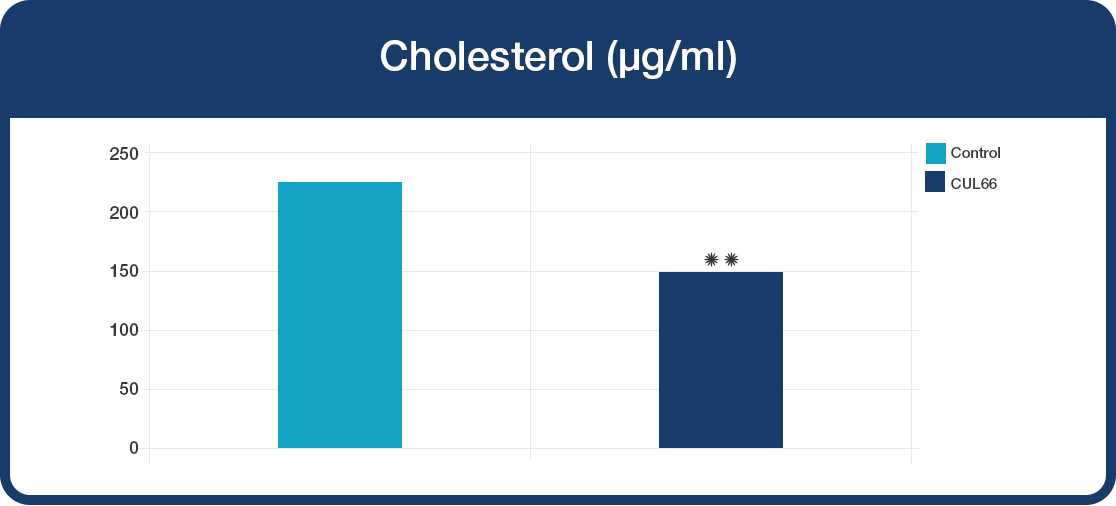
- Cholesterol levels in bacterial culture media were lowered in the presence of L. plantarum CUL66 (**P<0.001).
Bile salt hydrolase activity
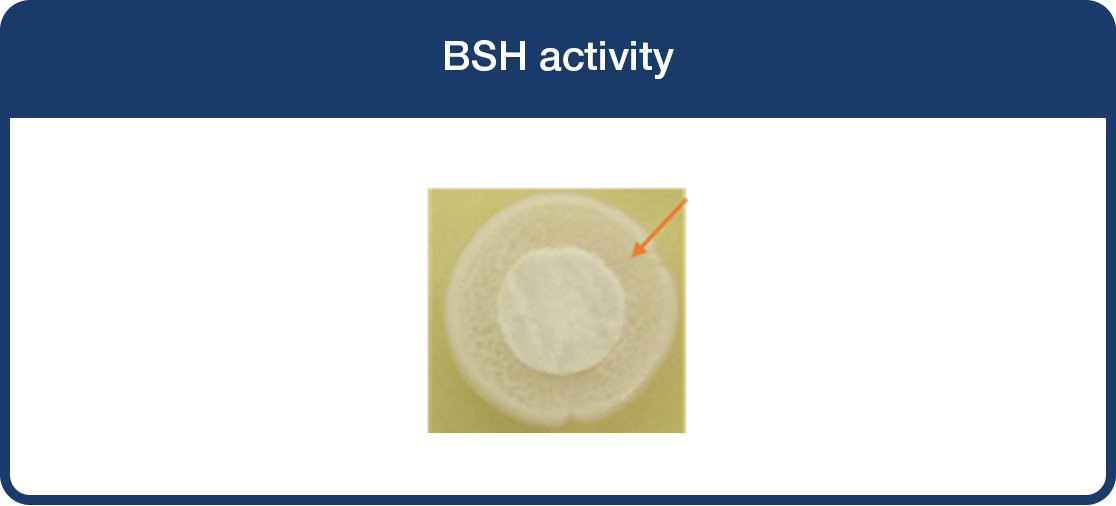
- A white precipitate was observed when L. plantarum CUL66 was grown in the presence of bile salts, which is indicative of BSH activity.
Cholesterol transport
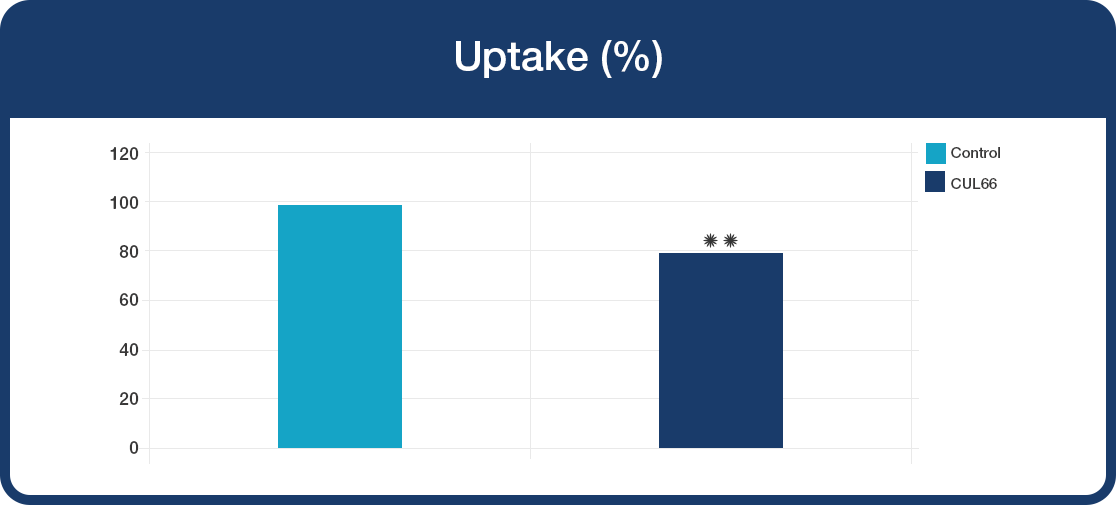
- L. plantarum CUL66 significantly reduced the uptake of extracellular cholesterol by intestinal epithelial cells (**P<0.001).
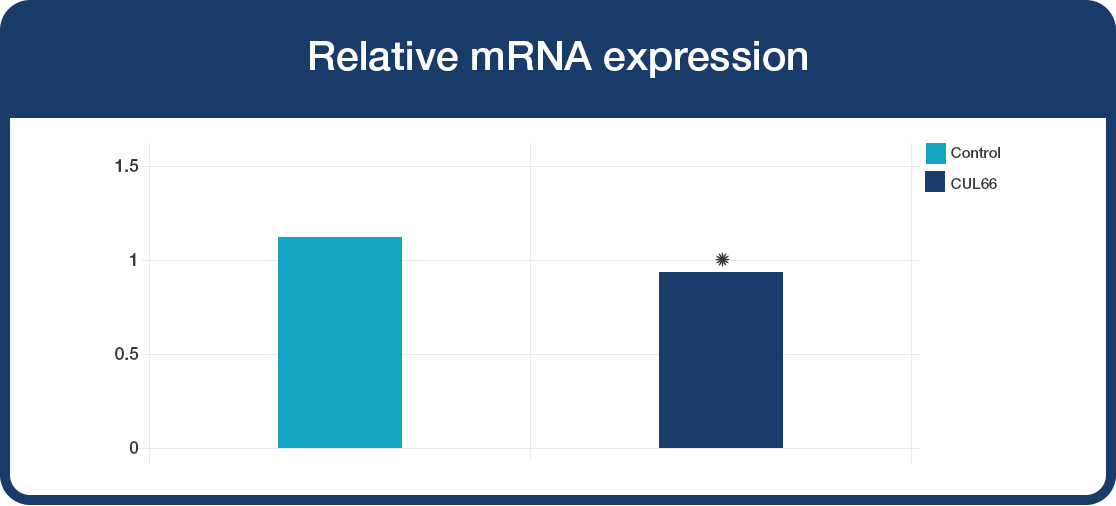
- L. plantarum CUL66 significantly reduced the expression of cholesterol transporter NPC1L1, which is critical for the uptake of cholesterol (*P=0.015).
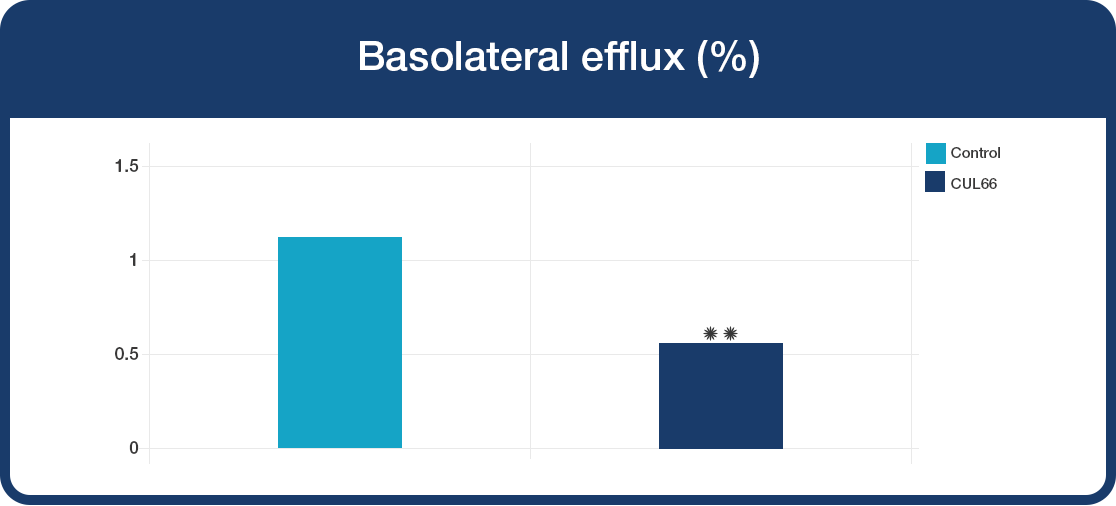
- L. plantarum CUL66 significantly reduced the efflux of intracellular cholesterol from intestinal epithelial cells into the basolateral (tissue) compartment (**P<0.001).
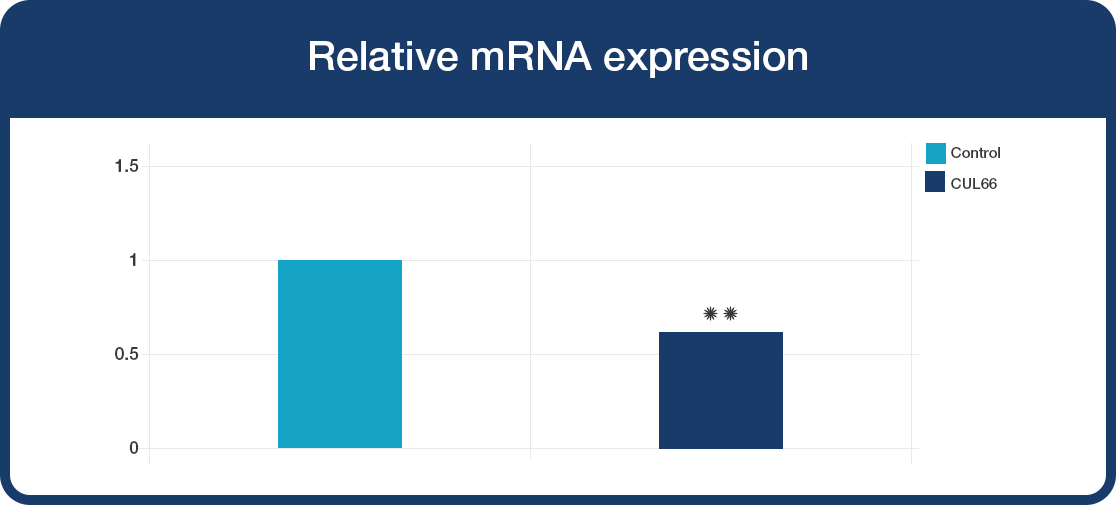
- L. plantarum CUL66 significantly reduced the expression of cholesterol transporter ABCA-1, which is involved in the efflux of intracellular cholesterol to the basolateral (tissue) compartment (**P<0.001).
Summary of Lactobacillus plantarum CUL66 Mechanism of Action
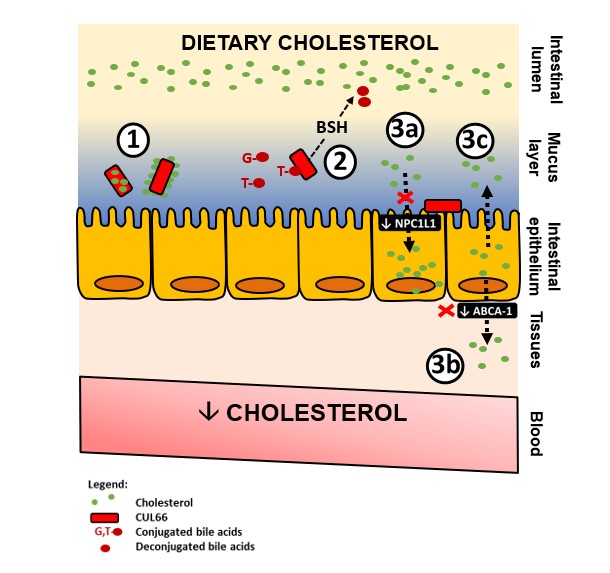
- CHOLESTEROL REMOVAL [cholesterol is bound or metabolised by CUL66 and subsequently excreted in faeces]
- BILE SALT HYDROLASE ACTIVITY [deconjugation (modifying) of bile acids leads to their reduced re-absorption and places an increased demand on the liver to synthesise more bile acids from circulating cholesterol in blood to replenish intestinal bile acids lost in faeces]
- REDUCTION OF CHOLESTEROL TRANSPORT ACROSS THE INTESTINAL EPITHELIUM [3a – reduction in the uptake of extracellular cholesterol and reduced expression of the NCP1L1 cholesterol transporter; 3b- reduction in the efflux of intracellular cholesterol to the basolateral compartment (tissues) and reduced expression of the ABCA-1 cholesterol transporter; 3c – no change on the intracellular cholesterol efflux back into the apical (intestinal lumen) compartment]
Conclusion
Lactobacillus plantarum CUL66 is a very promising cholesterol-lowering candidate.

